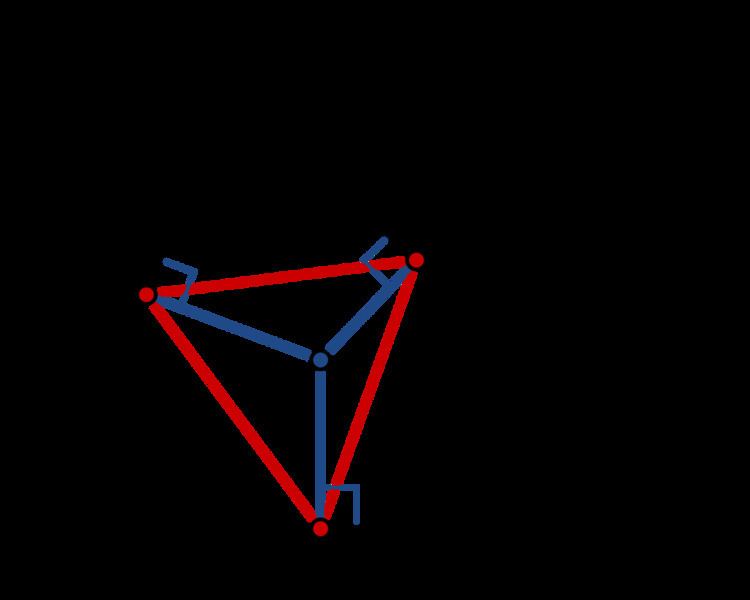 | ||
In Euclidean geometry, the Erdős–Mordell inequality states that for any triangle ABC and point P inside ABC, the sum of the distances from P to the sides is less than or equal to half of the sum of the distances from P to the vertices. It is named after Paul Erdős and Louis Mordell. Erdős (1935) posed the problem of proving the inequality; a proof was provided two years later by Mordell and D. F. Barrow (1937). This solution was however not very elementary. Subsequent simpler proofs were then found by Kazarinoff (1957), Bankoff (1958), and Alsina & Nelsen (2007).
Contents
Barrow's inequality is a strengthened version of the Erdős–Mordell inequality in which the distances from P to the sides are replaced by the distances from P to the points where the angle bisectors of ∠APB, ∠BPC, and ∠CPA cross the sides. Although the replaced distances are longer, their sum is still less than or equal to half the sum of the distances to the vertices.
Statement
From a point P inside a given triangle ABC the perpendiculars PL,PM,PN are drawn to its sides.
Proof
Let the sides of ABC be a opposite A, b opposite B, and c opposite C; also let PA = p, PB = q, PC = r, dist(P;BC) = x, dist(P;CA) = y, dist(P;AB) = z. First, we prove that
This is equivalent to
The right side is the area of triangle ABC, but on the left side, r + z is at least the height of the triangle; consequently, the left side cannot be smaller than the right side. Now reflect P on the angle bisector at C. We find that cr ≥ ay + bx for P's reflection. Similarly, bq ≥ az + cx and ap ≥ bz + cy. We solve these inequalities for r, q, and p:
Adding the three up, we get
Since the sum of a positive number and its reciprocal is at least 2 by AM–GM inequality, we are finished. Equality holds only for the equilateral triangle, where P is its centroid.
